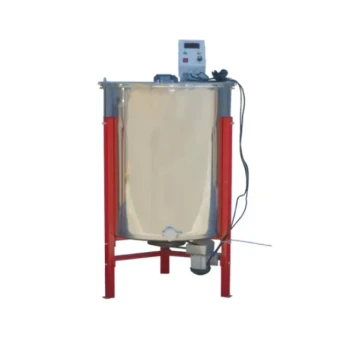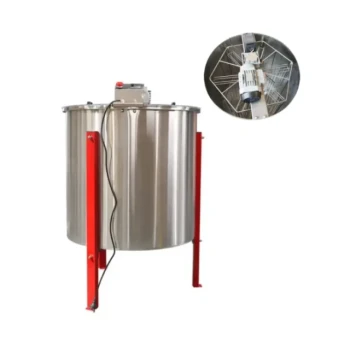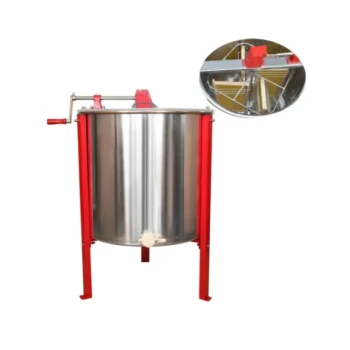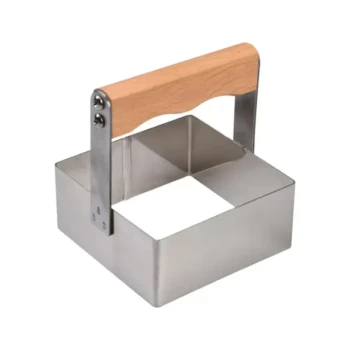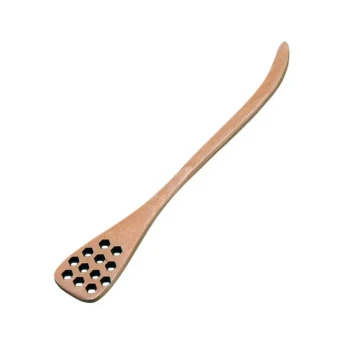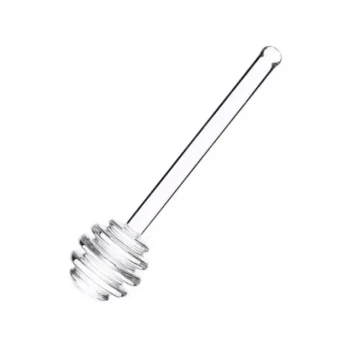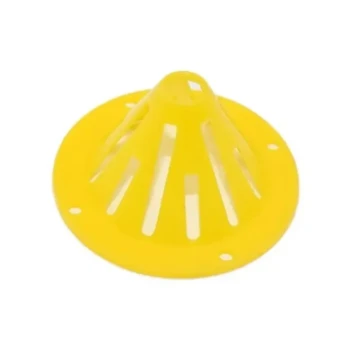The primary methods for uncapping honey involve using a specialized tool to slice, melt, or perforate the thin layer of beeswax that seals the honeycomb. The most common tools are heated electric knives for speed and efficiency, traditional cold serrated knives for affordability, and mechanical devices like rollers or pull scrapers for specific situations. This process is a mandatory step before honey can be removed from the frame.
Choosing an uncapping method is not just about removing wax; it's a critical decision that balances the cost of equipment, the speed of your workflow, and the long-term health of your comb. The right tool depends entirely on the scale of your operation and your primary goals.
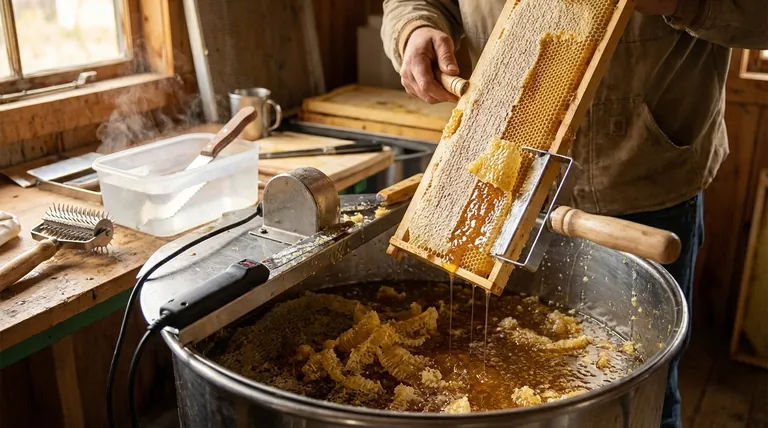
Why Uncapping is a Critical Step
Before diving into the tools, it's essential to understand the purpose of uncapping. This single step has a direct impact on both your honey yield and the well-being of your bees.
Enabling Honey Extraction
The wax cappings create a perfect, airtight seal over each cell of cured honey. To extract the honey using a centrifugal spinner, these seals must be cleanly removed. If cells remain capped, the honey will be trapped inside the comb during the extraction process.
Preserving the Comb for Bees
A key goal of uncapping is to preserve the underlying drawn-out comb structure. After extraction, the frames can be returned to the hive. The bees can then clean and immediately begin refilling the existing cells, saving them the immense energy required to build new wax comb from scratch.
A Breakdown of Uncapping Tools
Your choice of tool will be the biggest factor in the speed and feel of your uncapping process. Each has a distinct profile of benefits and drawbacks.
The Heated Electric Knife
A heated electric knife has a built-in heating element, sometimes with an adjustable thermostat, that melts through the wax cappings. This is the preferred tool for many medium-to-large scale beekeepers.
The heated blade glides through the wax with minimal effort, creating a very clean and precise cut. This results in a fast, efficient workflow.
The Cold Serrated Knife
A cold uncapping knife is a simple, sharp, serrated blade. To be effective, the blade is typically dipped into a container of very hot water between cuts. The heat transferred to the blade helps it slice through the wax more easily.
This is the most affordable and traditional method, requiring no electricity. While effective, it is noticeably slower than using a heated knife.
Mechanical Uncappers (Rollers & Scrapers)
Other tools include spiked rollers and pull-style scrapers or slicers. A roller is a simple tool with plastic spikes that you roll over the comb to perforate the cappings rather than slicing them off. A pull scraper shaves the cappings off, often used for low spots a knife might miss.
These tools can be quick and are useful for frames with uneven or recessed comb. However, they can be messier and may cause more damage to the cell structure compared to a clean knife cut.
Understanding the Trade-offs
The "best" tool does not exist. The right choice is a matter of balancing your specific priorities for cost, speed, and precision.
Speed vs. Cost
There is a direct trade-off between speed and cost. An electric knife is a significant investment but dramatically increases the speed and reduces the physical effort of uncapping, making it ideal for larger harvests. A cold knife is inexpensive but requires more time and effort.
Precision vs. Comb Damage
A sharp knife, whether hot or cold, provides the most precise cut. A clean slice neatly removes the cappings while leaving the underlying cell walls intact and ready for reuse by the bees. Mechanical rollers, by design, puncture the cappings and can be less precise, potentially leading to more cleanup for the bees.
Maximizing Honey Yield
Your technique is just as important as your tool. Inefficient uncapping directly translates to lost honey. Slicing too deep wastes honey and wax, while slicing too shallow leaves honey trapped in the frame. Using an uncapping tank or a dedicated basin to catch the wax and dripping honey is critical for maximizing your final yield.
Choosing the Right Method for Your Apiary
Your decision should be based on the size of your apiary and your primary goal for the harvest.
- If your primary focus is affordability and you have a small number of hives: A cold serrated knife dipped in hot water is the most practical and economical choice.
- If your primary focus is speed and efficiency for a larger operation: Investing in an electric heated knife will provide a significant return in time and effort saved.
- If you are dealing with uneven comb or want a simple, non-electric option: A spiked roller or pull scraper can effectively open the cells, especially in recessed areas of the frame.
Ultimately, a clean and complete uncapping process ensures a successful harvest and a healthy, productive colony.
Summary Table:
| Method | Best For | Key Feature |
|---|---|---|
| Heated Electric Knife | Medium-to-Large Scale Beekeepers | Fast, efficient, clean cuts with minimal effort |
| Cold Serrated Knife | Small-Scale or Budget-Conscious Beekeepers | Affordable, traditional, requires dipping in hot water |
| Mechanical Uncappers (Rollers/Scrapers) | Uneven Comb or Non-Electric Needs | Simple, effective for perforating or scraping recessed areas |
Ready to optimize your honey harvest? The right uncapping equipment is key to maximizing your yield and protecting your comb. HONESTBEE supplies professional-grade uncapping knives, tanks, and other essential beekeeping supplies to commercial apiaries and distributors. Our wholesale-focused operations ensure you get the durable, efficient tools you need for a successful season.
Contact HONESTBEE today to discuss your equipment needs and get a quote!
Visual Guide
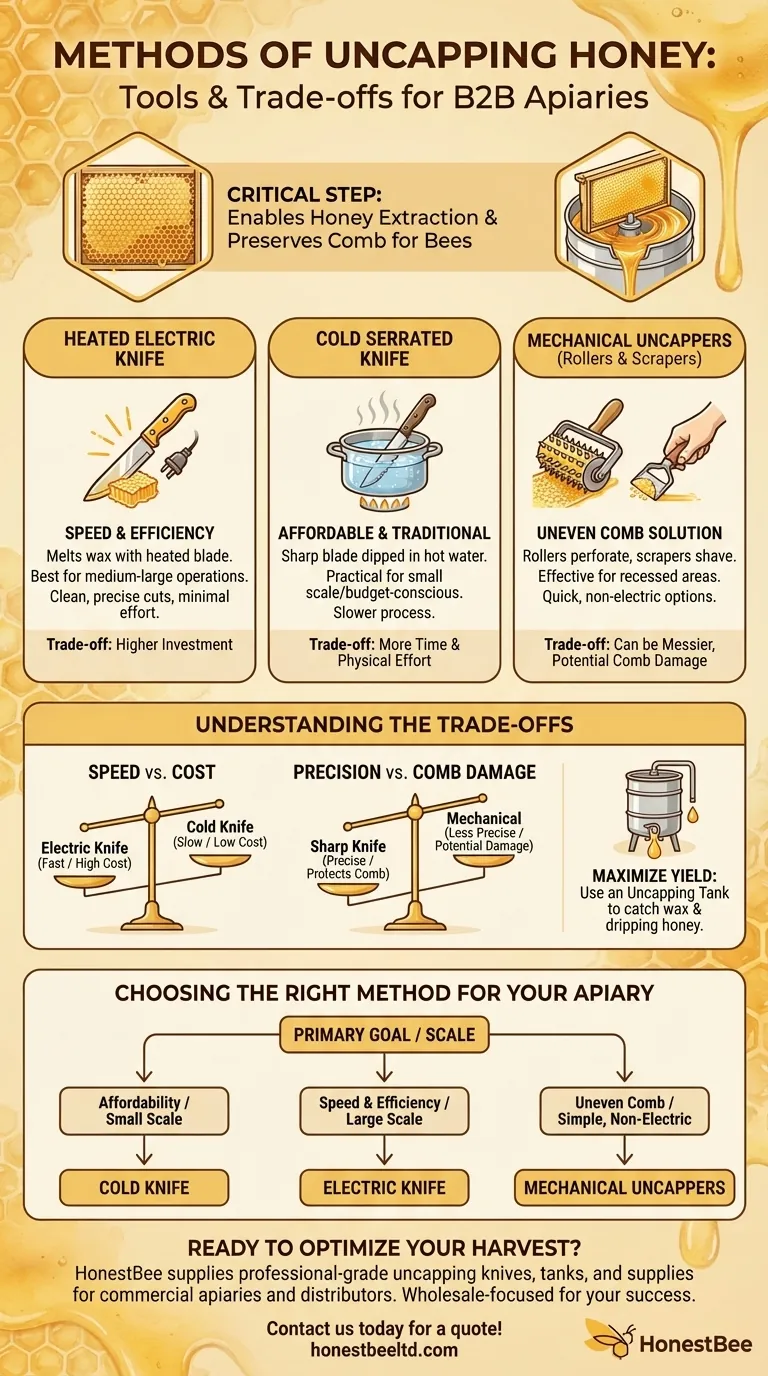
Related Products
- Stainless Steel Dual Blade Uncapping Plane
- Professional Wide Blade Honey Scraper for Beekeeping and Honey Processing
- Professional 4 Frame Self Reversing Electric Honey Extractor for Beekeeping
- HONESTBEE 6 Frame Self Reversing Electric Honey Extractor for Beekeeping
- HONESTBEE 4 Frame Manual Self Reversing Honey Extractor for Beekeeping
People Also Ask
- How do you encourage bees to cap honey? Optimize Hive Conditions for a Perfect Harvest
- What is an uncapping plane, and how does it differ from an electric knife? Precision vs. Speed for Beekeepers
- What is the overall recommendation for beginner beekeepers regarding uncapping tools? Master Your First Honey Harvest
- What is the best way to uncap honey? Find the Perfect Tool for Your Hives
- Why do you uncap honey? Unlock Your Harvest with Efficient Uncapping


